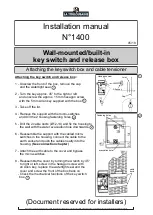
1-27
To do...
Use the command...
Remarks
Enter Ethernet port view
interface
interface-type
interface-number
—
Configure the port as an edge
port
stp edged-port enable
Required
By default, all the Ethernet
ports of a switch are non-edge
ports.
On a switch with BPDU guard disabled, an edge port becomes a non-edge port again once it receives a
BPDU from another port.
You are recommended to configure the Ethernet ports connected directly to terminals as edge ports
and enable the BPDU guard function at the same time. This not only enables these ports to turn to the
forwarding state rapidly but also secures your network.
Configuration example
# Configure Ethernet 1/0/1 as an edge port.
1) Configure Ethernet 1/0/1 as an edge port in system view
<Sysname> system-view
[Sysname] stp interface Ethernet 1/0/1 edged-port enable
2) Configure Ethernet 1/0/1 as an edge port in Ethernet port view
<Sysname> system-view
[Sysname] interface Ethernet 1/0/1
[Sysname-Ethernet1/0/1] stp edged-port enable
Setting the Link Type of a Port to P2P
A point-to-point link directly connects two switches. If the roles of the two ports at the two ends of a
point-to-point link meet certain criteria, the two ports can turn to the forwarding state rapidly by
exchanging synchronization packets, thus reducing the forward delay.
You can determine whether or not the link connected to a port is a point-to-point link in one of the
following two ways.
Setting the Link Type of a Port to P2P in system view
Follow these steps to specify whether the link connected to a port is point-to-point link in system view:
To do...
Use the command...
Remarks
Enter system view
system-view
—
Specify whether the link
connected to a port is
point-to-point link
stp interface
interface-list
point-to-point
{
force-true
|
force-false
|
auto
}
Required
The
auto
keyword is adopted
by default.
















































